Above the Clouds: Mountaineering in Colombia
“How fit are you?” David asks me in a voice message. While I am still thinking about the fact that the last hiking tour was already a little while ago, David continues: “the tour will not be easy”. Although David integrates much more endurance sports in his everyday life than I do, he is not yet trained enough, as he claims. So how am I supposed to prepare myself in the next few weeks to climb over a steep slope up to 5215 meters?
Add to that, I have no experience. Neither have I used a crampon or a climbing harness, nor have I had an ice axe in my hand. At least you can rent the equipment without any problems in Salento. The small community is located in the Colombian coffee region and is a popular tourist destination.
I know David from my studies in Marburg. Now he lives in Bogotá and writes a mountain guide about the Andes in Colombia. He has climbed many mountains in South America and knows the Andes of Colombia like the back of his hand. For his book he wants to do a tour to the summit of the active volcano Nevado del Tolima and I am happy about the opportunity to finally get to know mountaineering.
Past Narrow Giants
With heavily loaded backpacks we leave early in the morning with a “Willy”, that’s the name of the small colorful jeep taxis, into the Valle de Cocora. The valley is the starting point of our tour and famous for its Quindio palms.
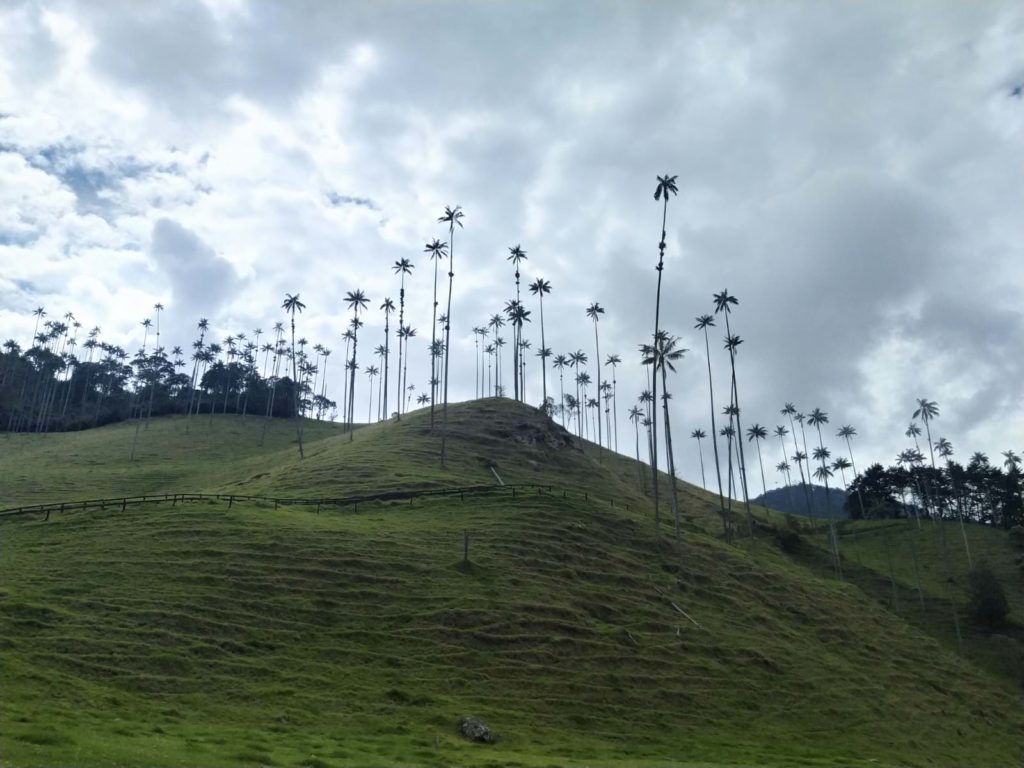
We say goodbye to Nicki for four days and stomp in rubber boots along a river through the forest. Thereby we cross adventurous suspension bridges again and again, until we finally start to climb uphill.
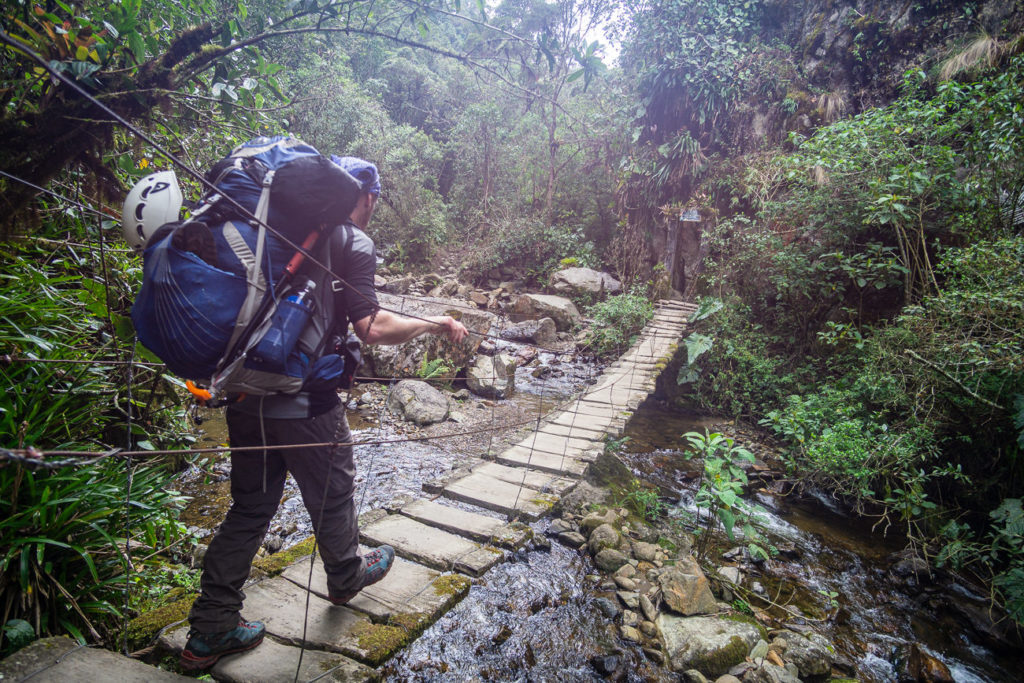
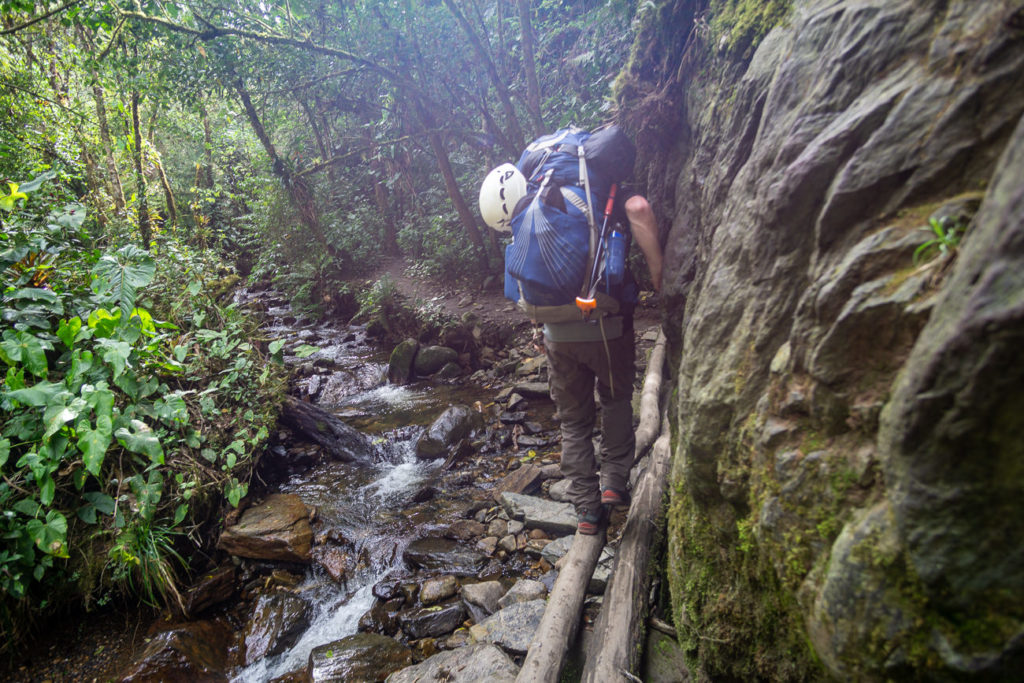
Through the Paramo
The higher we walk, the more light the surroundings become. Wild orchids decorate our path. In the late afternoon we reach the Paramo, the highland steppe of Colombia. Here there are no more trees. Instead we see countless frailejones, a unique shrub species, which grows in the Andes in northern South America.
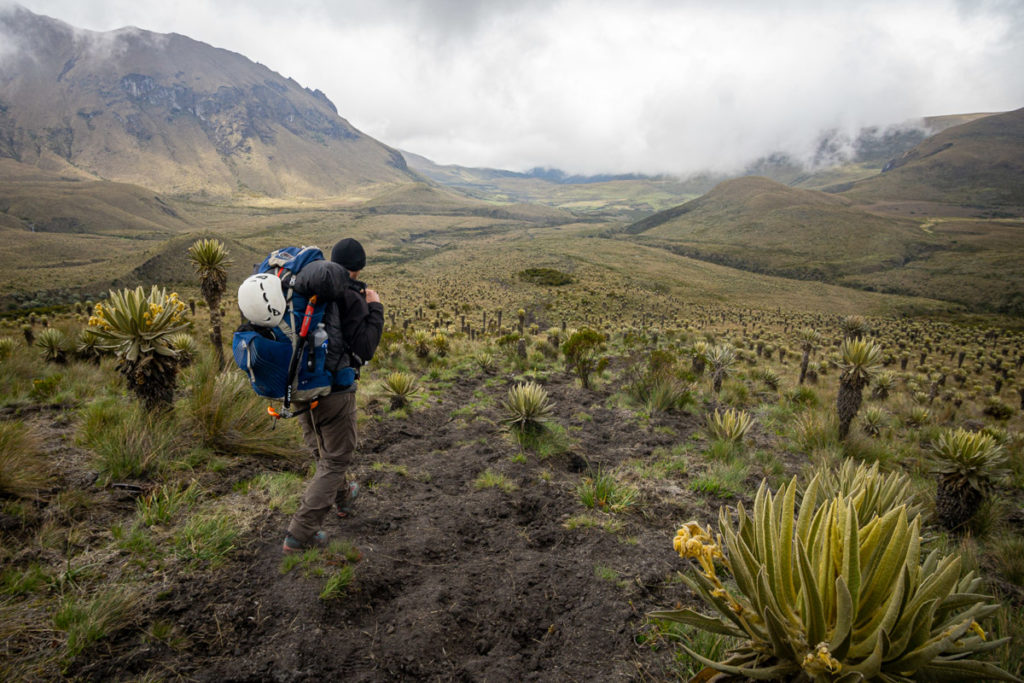
At the edge of the path I see a lonely donkey, which has lost its luggage on one side. Helplessly he stands there and cannot walk any further. We want to help him and put the luggage again on his back, but we are shocked: The poor animal is so heavily loaded that even the two of us cannot lift the weight of the bags on him. So we loosen all straps and free him from his load. When we have just finished, the donkey owner arrives, greets us briefly and the donkey is loaded again.
We move on towards the hut where we can pitch our tent and get hot water. At sunset the cloudy sky clears up and we can see the top of Tolima for the first time.
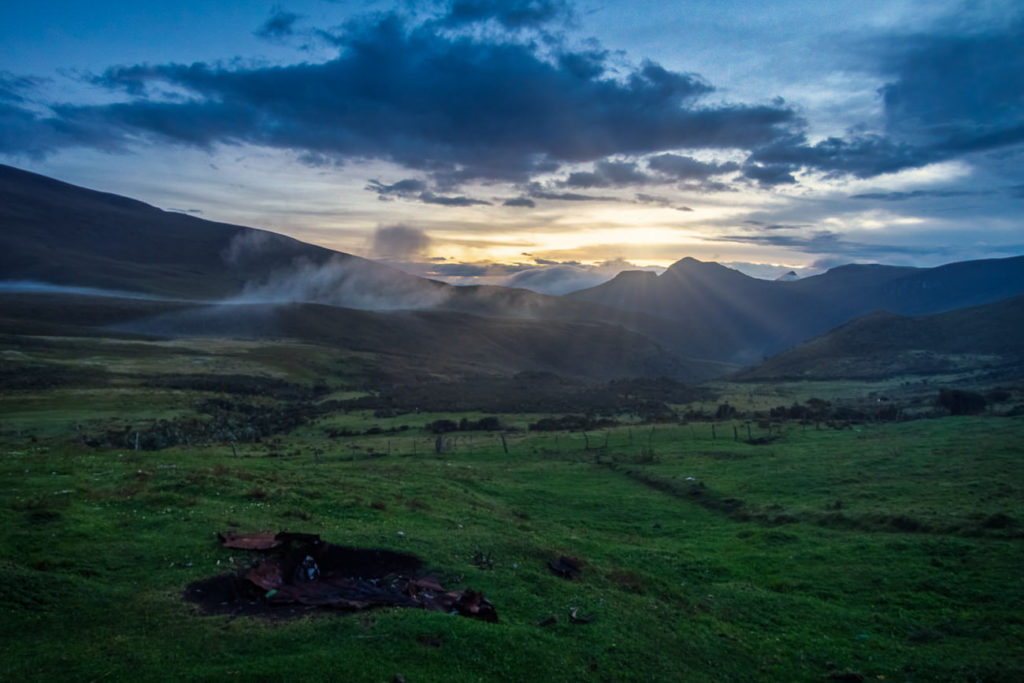
The next day stretches again through a landscape full of frailejones. The stage to the base camp is not very long, but exhausted from the previous day and with increasing altitude it is a hard way.
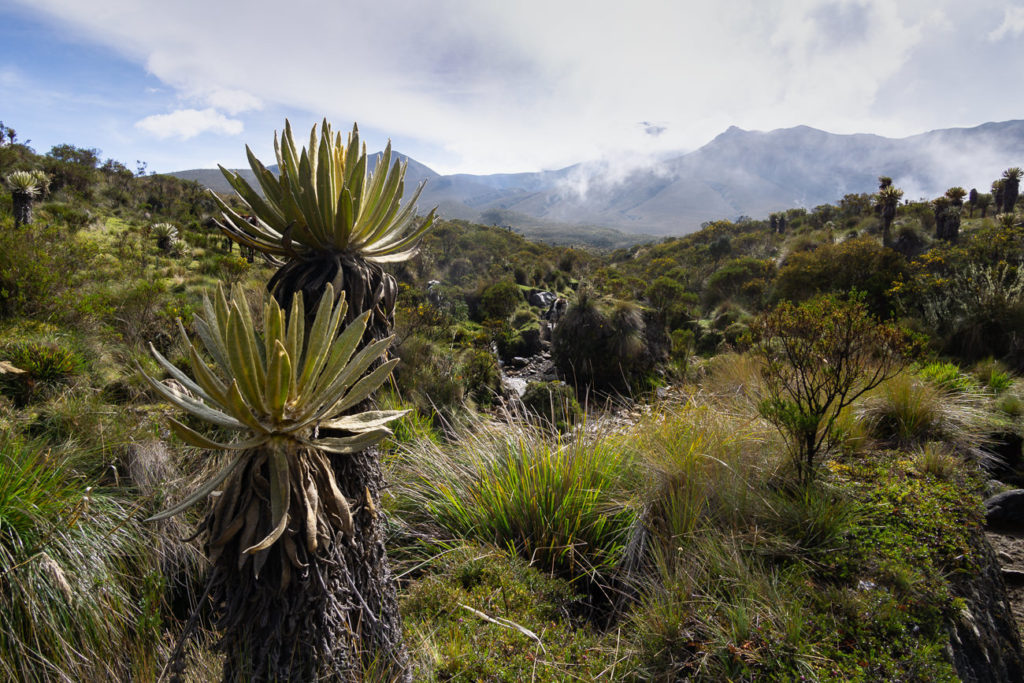
To save weight, we hike without large water supplies. After all, we always walk upstream. As there are some cows grazing here and watching us curiously, the water is treated with tablets. This should always be done in pastureland.
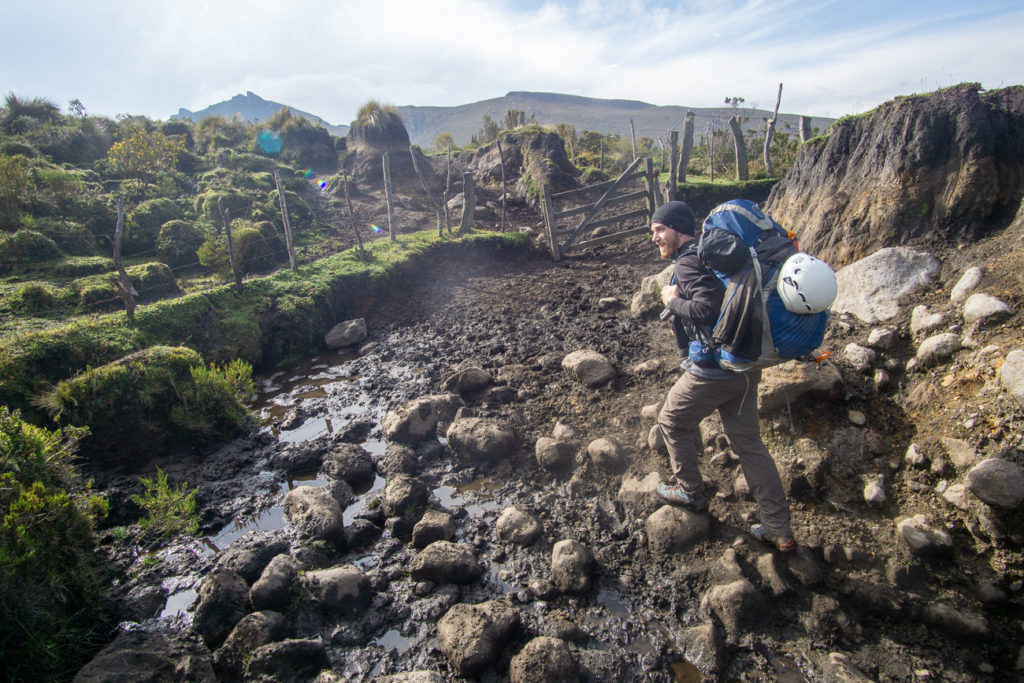
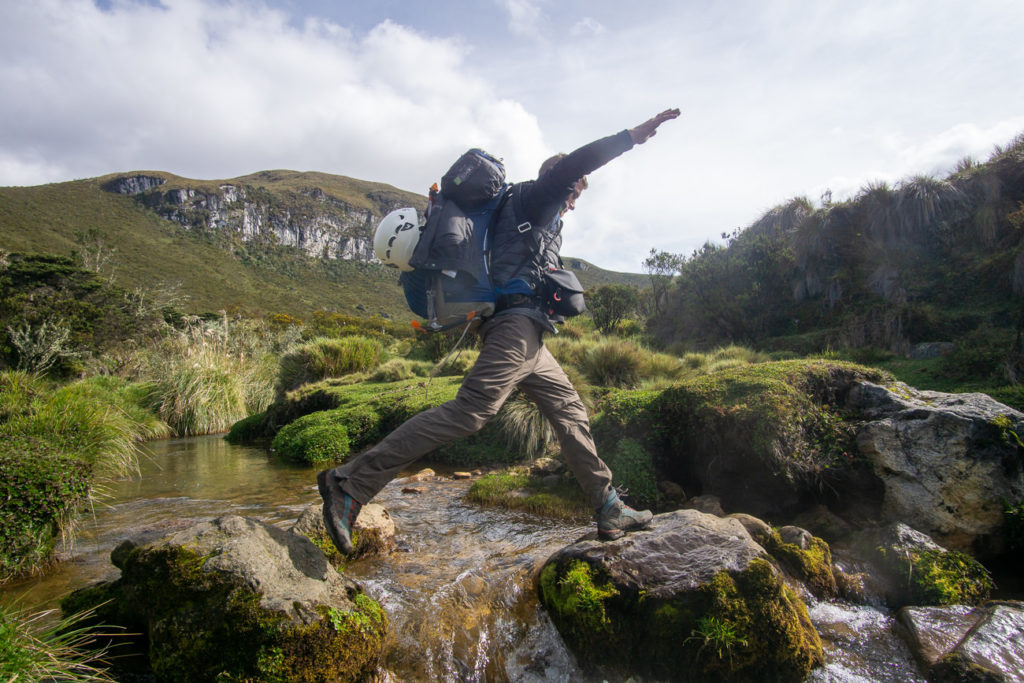
Round of Honor
At some point, however, there are no more rivers, even though there are still waters registered on the GPS device. A hiker coming towards us explains that there is no more available water further up. Great – someone has to go back and get water.
We draw for who the lucky man is… scissors beats paper and I have to turn back. David squeezes the GPS device into my hand and I run the just gained altitude meters downhill again. After I have filled up our supplies, I reach David three quarters of an hour and maybe five kilometres later again and we continue to walk towards the basecamp.
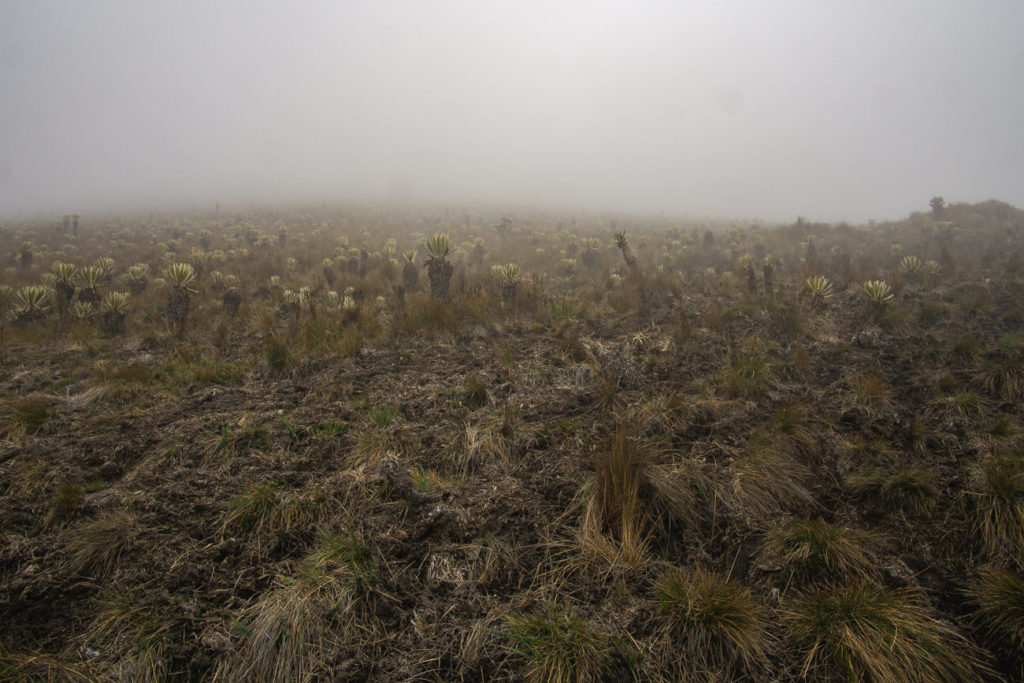
Not Alone
Exhausted and with aching feet we reach the camp in the late afternoon. What we find there, even David hasn’t experienced in Colombia yet: A tent city with almost 50 mountaineers. Since it’s a long weekend at the moment, we are by far not the only ones who want to climb the Tolima tomorrow.
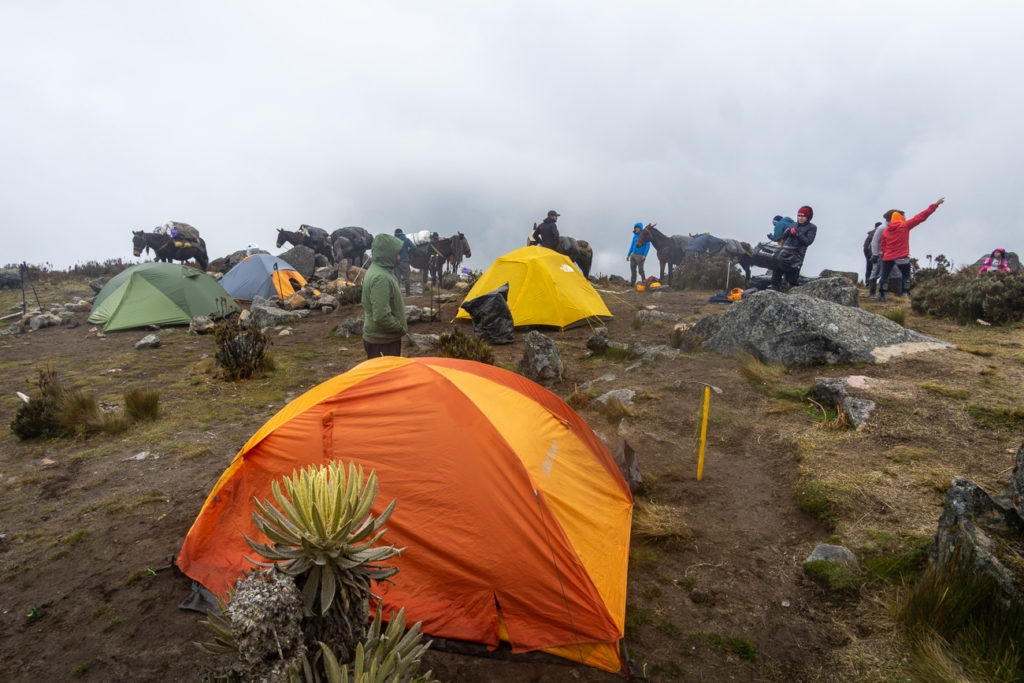
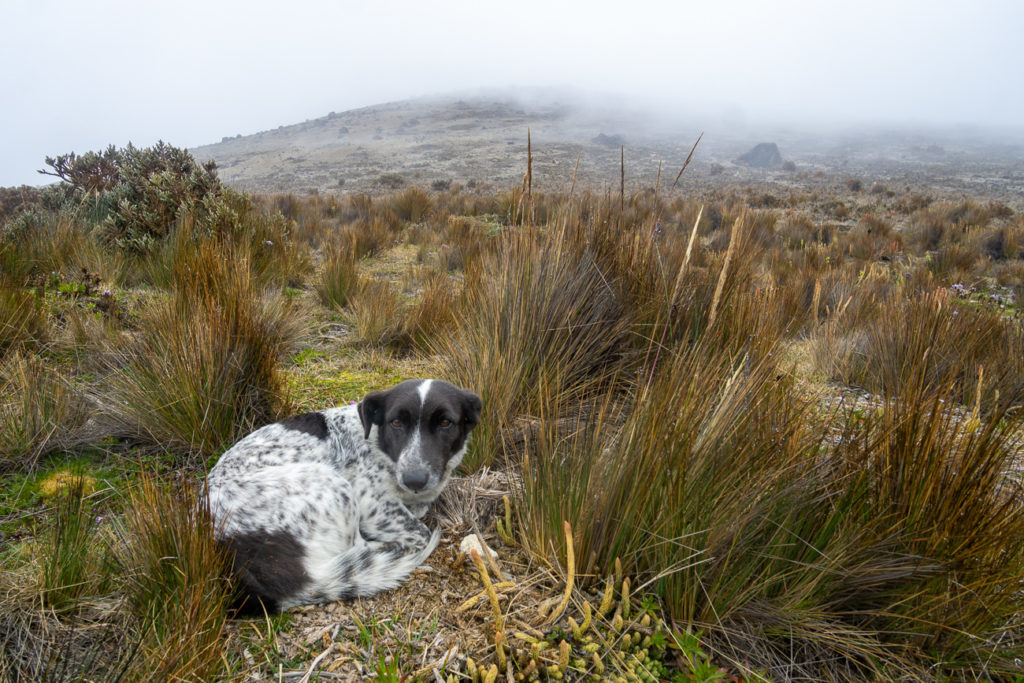
We look for the last flat place in the camp and pitch our tent. Quickly we cook something, because we want to lie in the sleeping bag before sunset.
After chinese noodles with tomato sauce we want to drink the Colombian ‘Agua de Panela’. A kind of tea from sugar cane. I heat our water on the gas stove. And just before the water boils, somebody stumbles over the pot and I see a litre of our holy, dragged up water seeping into the ground. Luckily David can talk an expedition group out of new water.
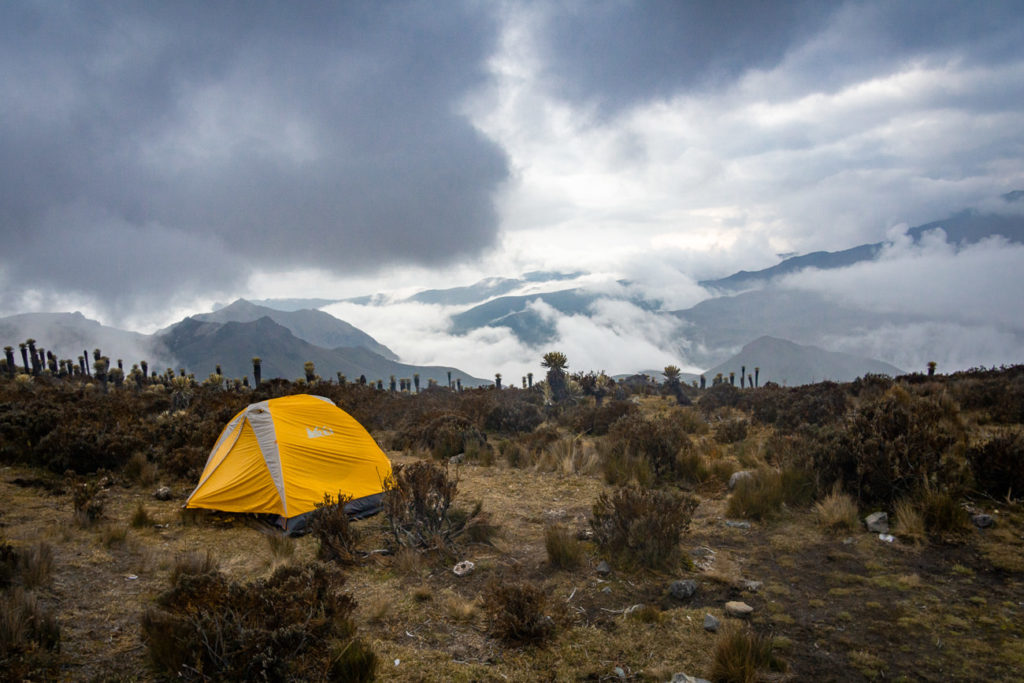
However, we cannot sleep much or well on the altitude and in the cold. We both lie more dozing than sleeping in the tent. To avoid freezing, I put the rescue blanket from the first aid kit above my down sleeping bag.
Early Ascent
The alarm clock is set to two o’clock at night so that we arrive at the summit at sunrise. Half an hour before the alarm clock rings David asks me if we want to leave already. Sure, I can’t sleep anyway. We leave the tent at the base camp. It is pitch dark and far up the mountain we see countless headlamps of the other climbers, who have already left before us.
Highly motivated, completely overtired and at a brisk pace we overtake some groups. When it comes to a climbing passage, we hang ourselves behind a troop, because in the dark the way alone is hard to find. More and more snow lies under us. Shortly before the glacier we put on crampons and ropes together.
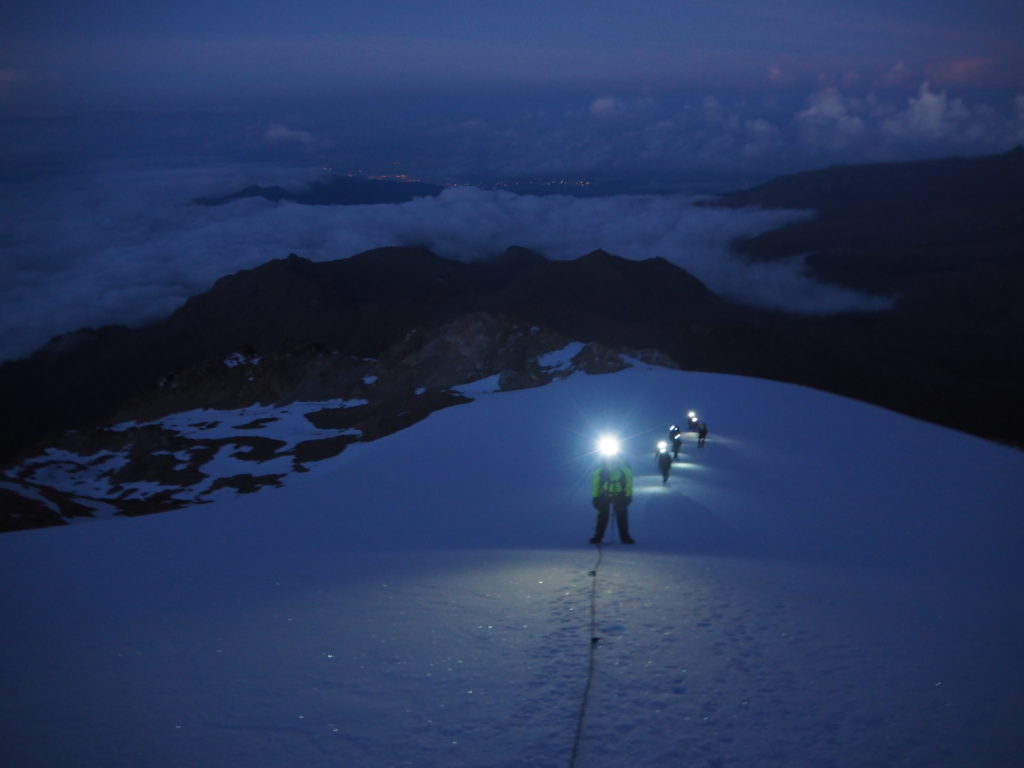
The effort and the altitude are getting to me. My thoughts only revolve around “left foot, right foot” and “breathe in, breathe out”. I try not to let anybody notice and follow David’s traces. At half past five it gets brighter and a spectacular picture emerges as we break through the cloud cover. From the top of the Tolima we are only separated by a glacier.
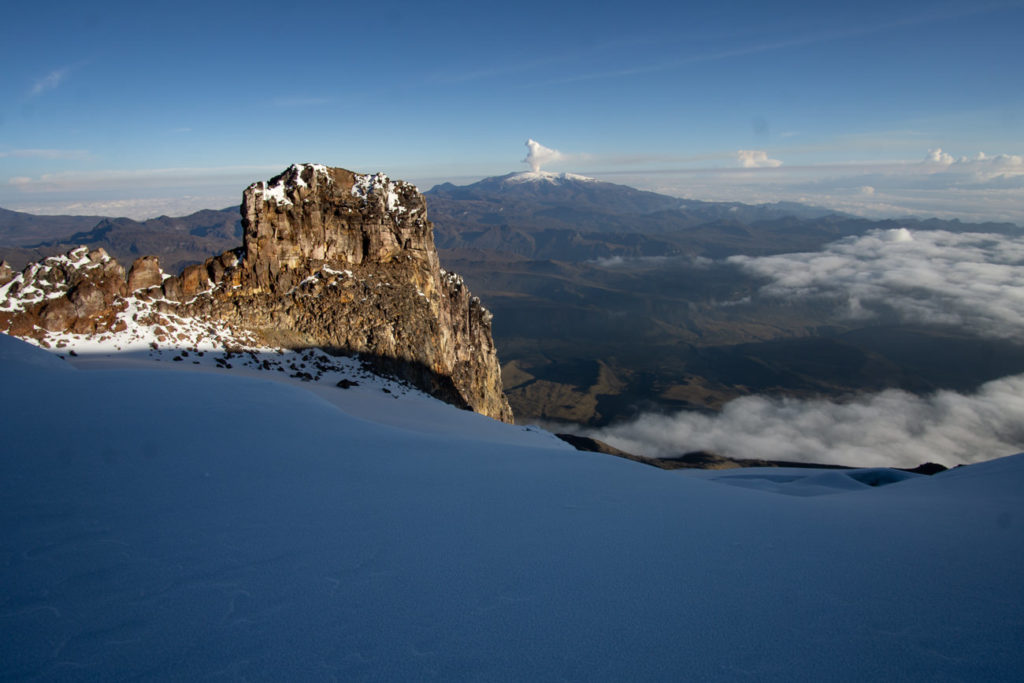
Around us the clouds shine in soft light. Cold tears run down my cheeks. I have to cry, but with happiness, because it is incredibly beautiful. A short breath and then it goes on. We climb up the steep slope with the ice axe. When we reach the summit, the sun rises – perfect timing. David and I lie in each other’s arms, then a few photos are taken.
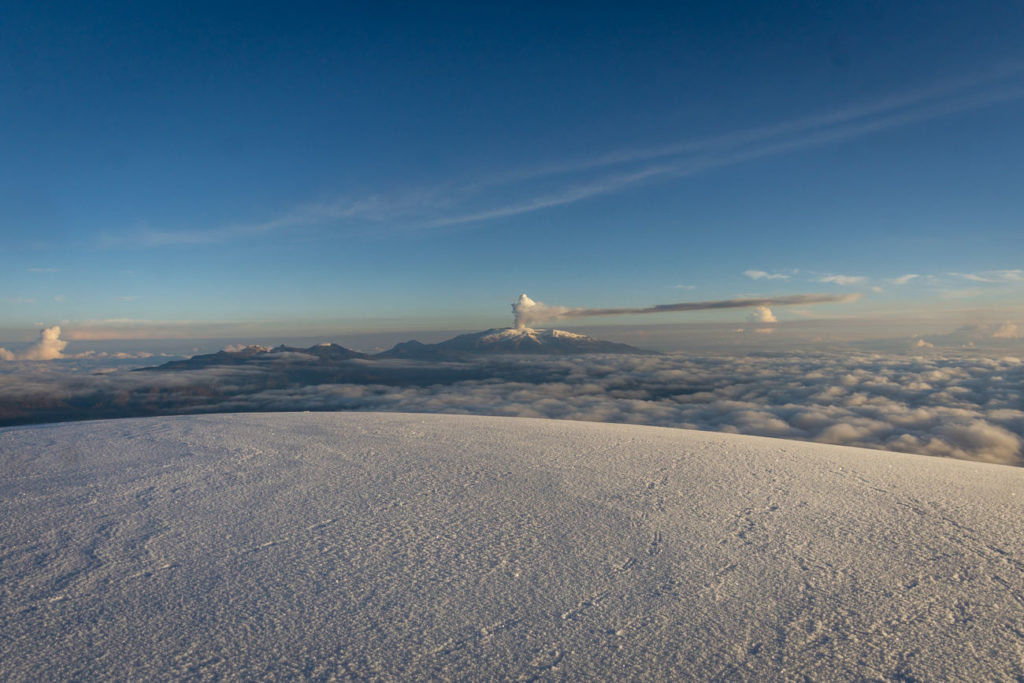
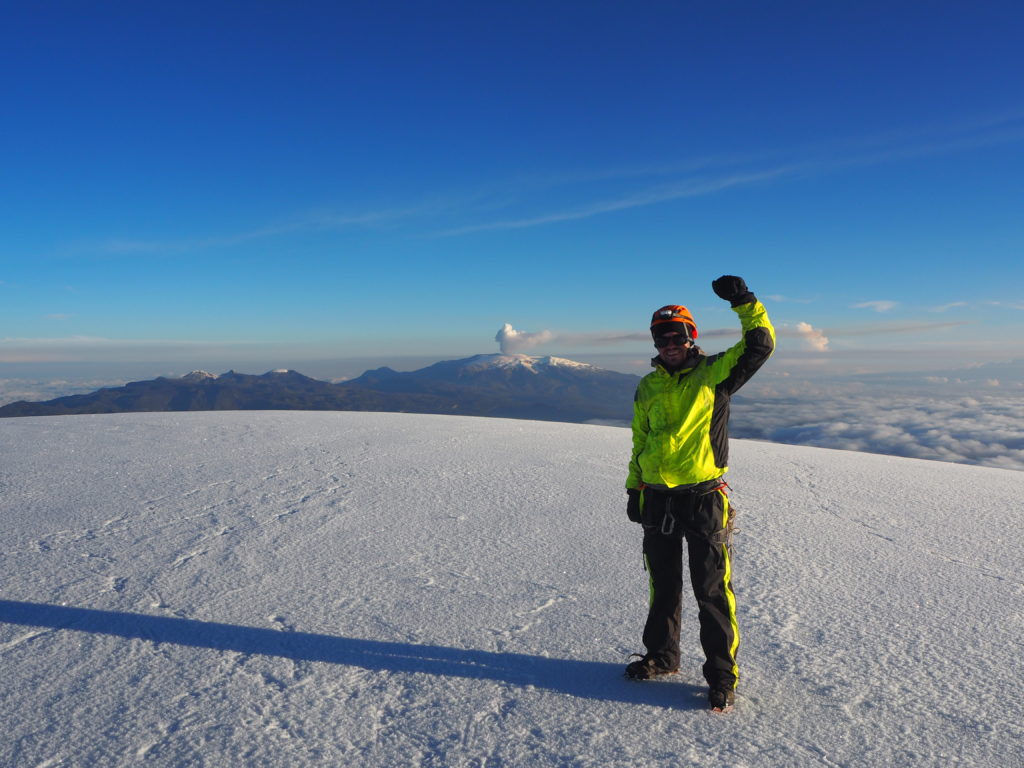
This Day is Far From Over
After half an hour we climb downhill again and on our way back we encourage the other climbers, who are still visibly struggling to reach the summit.
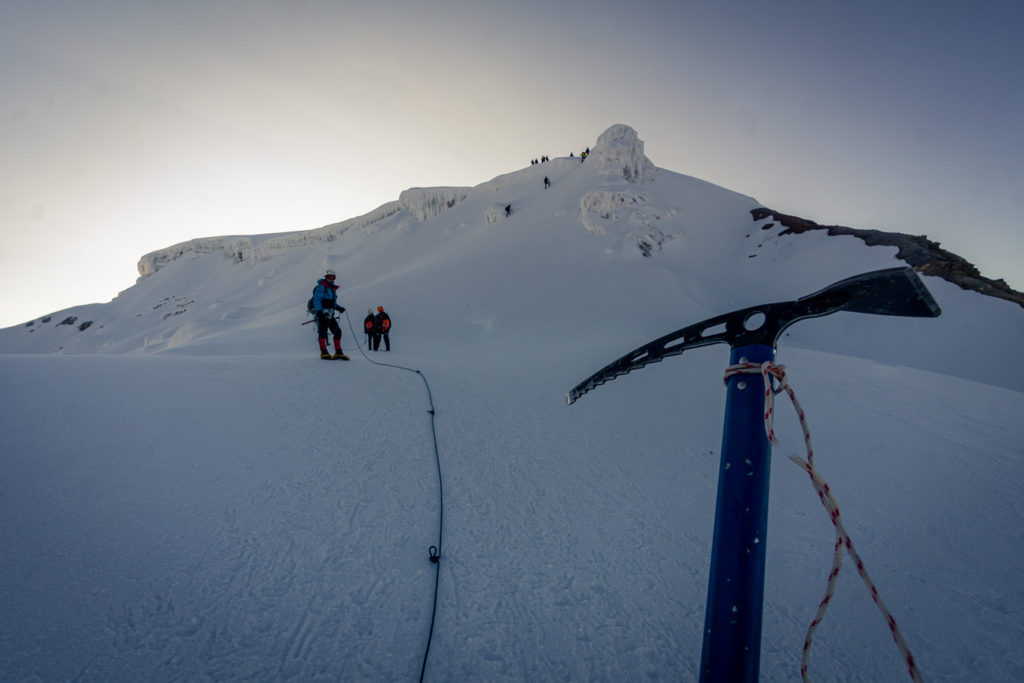
However, a leisurely pace is still not the plan for us either. After all, we want to go down as far as possible, so that we only have a small distance to go on the last day. When we reach the deserted base camp, we allow ourselves an hour of sleep before we take down our tent.
Not much recovered, but now loaded with heavy backpacks again, we continue our descent. Both of us have the impression that the way back is much further than bafore, although we are faster downhill. I have to pant more and more, every kilometre a little worse. After the summit ascent and the efforts of the last days I am completely destroyed. My whole body hurts.
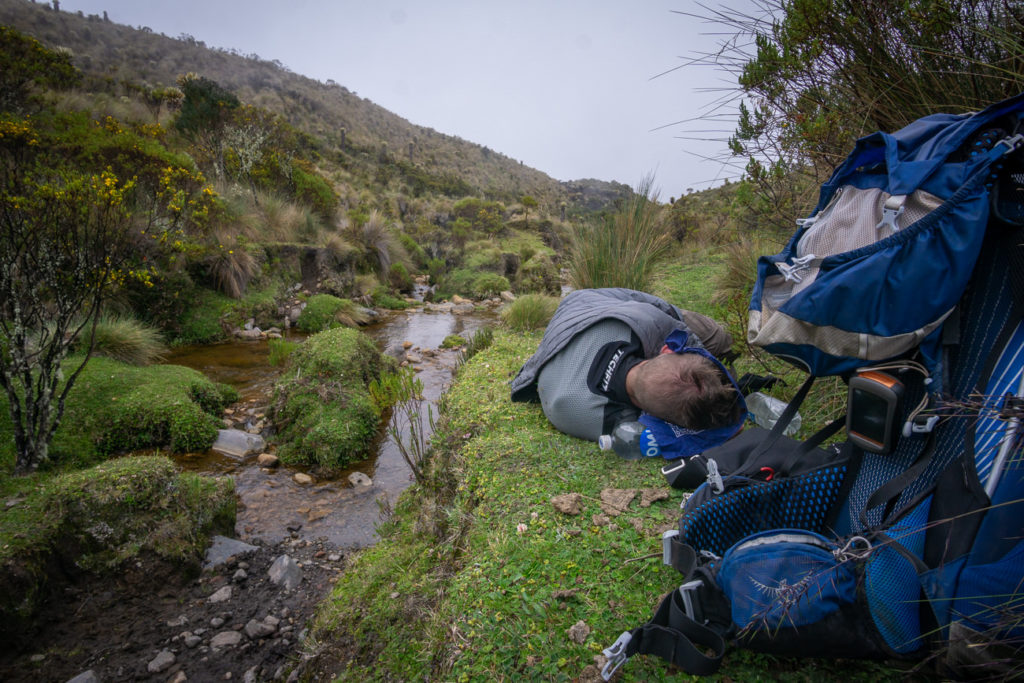
Although we both don’t feel like it anymore, we continue the battle. Shortly before sunset we find a perfect campground directly on the way. It is the biggest relief to throw off the backpack and to get rid of the boots.
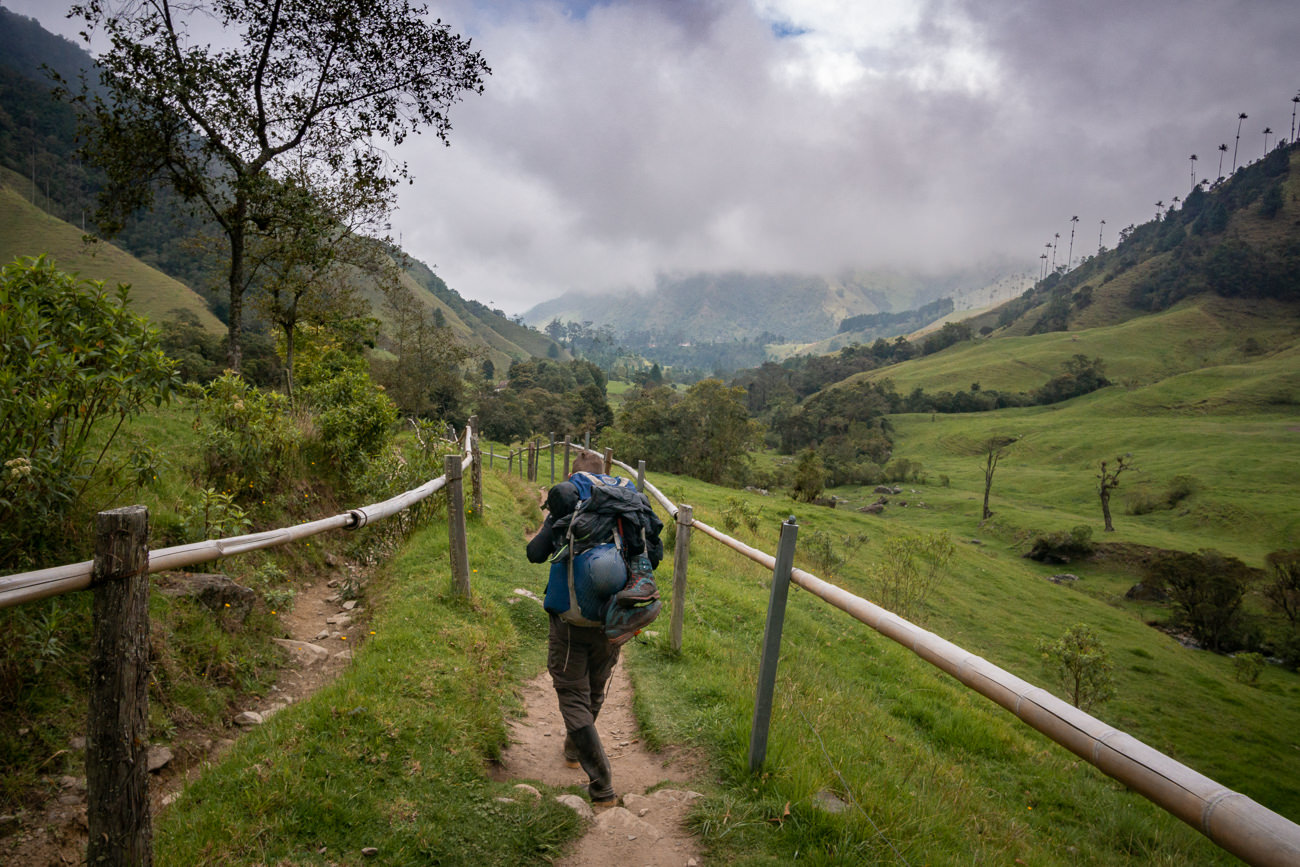
Done!
The night couldn’t be more quiet and the descent the next day is easy again. Along the way we discover many beautiful birds. Besides dozens of hummingbirds we also see a small tucan.
Overjoyed we reach the wax palms in the Cocora valley at noon. We sit down in the next Willy and I start to process the unforgettable impressions of the last days.
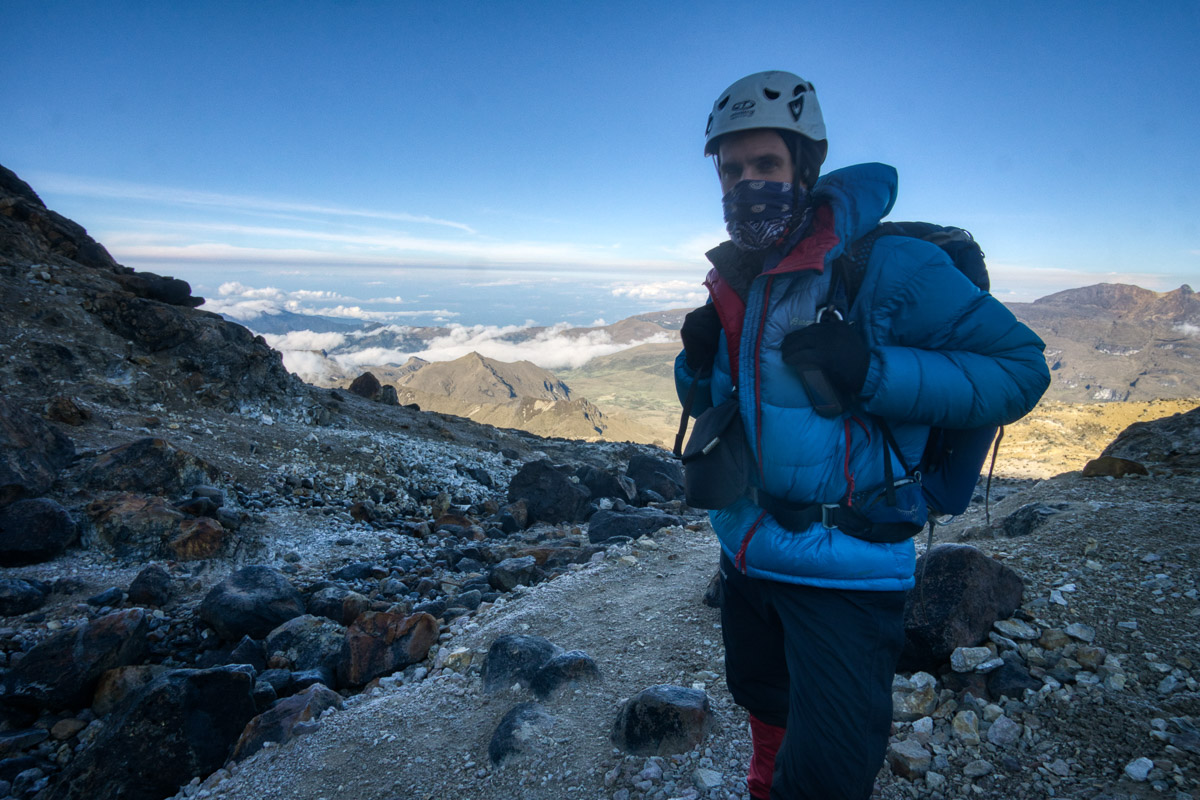


0 Comments